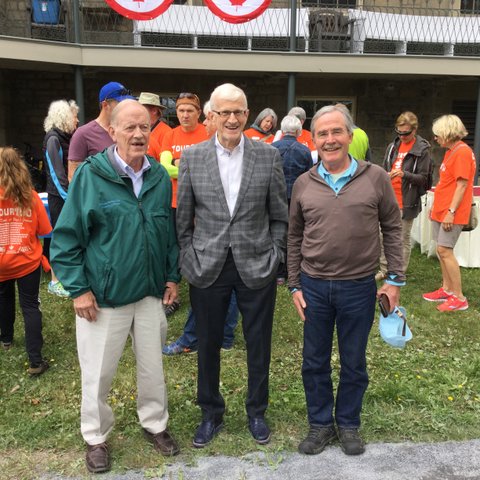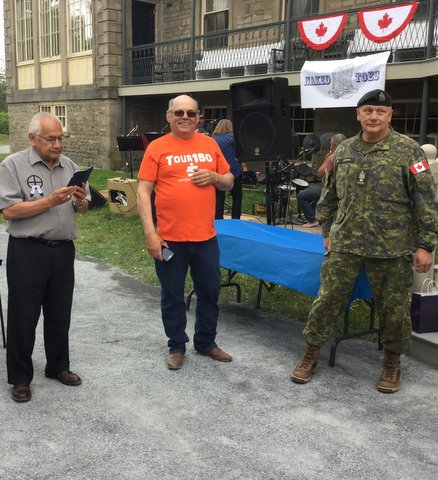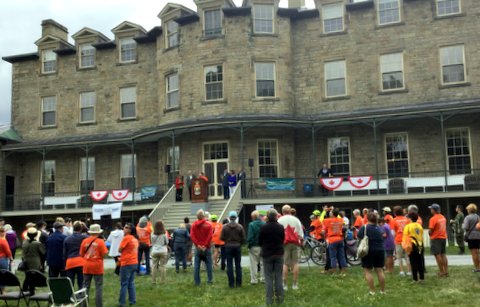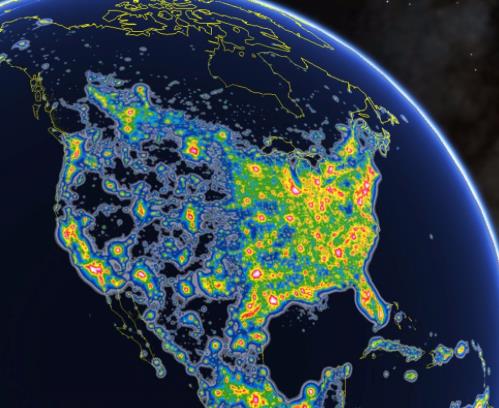Sentier NB Trail and the Fredericton Trails Coalition completed the much-anticipated ‘Tour 150’ on Saturday, August 26th, with the aim of bringing representatives of the diverse trail community in New Brunswick to one of Canada’s most trail friendly cities — Fredericton, New Brunswick — to celebrate the completion of Canada’s Great Trail. The Great Trail, envisioned over two decades ago, is the world’s longest continuous trail, tying together the east, west, and Arctic coasts of Canada in a 20,000 mile multi-use system of walkways, bikeways, ski-ways, and paddle-ways.
The International Appalachian Trail has a strong and abiding interest in the success of the trail movement in New Brunswick and Atlantic Canada, as the IAT is co-located with sections of the Great Trail in all five Atlantic Canada provinces. IAT Founder Dick Anderson and IAT Maine Board Members Walter Anderson and Don Hudson traveled to Fredericton to help celebrate ‘Tour 150’ and this great day for trails in Canada.

Dick Anderson, David Peterson, Don Hudson
IAT New Brunswick leader and Sentier NB Trail Executive Director Poul Jorgenson was one of the architects of Tour 150, and he was visibly excited to see trail users arrive on the back lawn of the residence of Lieutenant Governor Jocelyne Roy-Vinneau on the banks of the St. John River in Fredericton. They arrived on horseback, on bicycles and muscle-powered scooters, by canoe and kayak, as well as by walking and running. Trail enthusiasts from the four corners of the province were summoned — piped! — to the foot of the grand staircase by a ramrod bag piper in full uniform. Four pieces of a wonderful maple puzzle were delivered, coming together to make a wonderful representation of the province and its grand network of trails. Among the several speakers who warmed up the crowd, Past-President of the Fredericton Trails Coalition and Sentier NB Trail Dave Peterson made special mention in his remarks of the early work in 1994 and 1995 on the IAT in the province. Dave was a member of the original New Brunswick IAT Committee,, and was instrumental in shaping the early vision and route for the trail in the province.

Poul Jorgenson
The IAT Maine contingent was called out by several speakers, including representatives of local and provincial government, provincial agencies, Sentier NB Trail, and the Fredericton Trail Coalition. The Chair of the Board of Sentier NB Trail Jim Fournier sought Dick, Walter, and Don out in the crowd to make a special promise that his organization was committed to completing the IAT in the province, including the original route through the northwest corner of the province and a new southern connection with PEI and Nova Scotia.
Tour 150 was a great celebration of trails in New Brunswick, and the IAT was proud to be represented.


